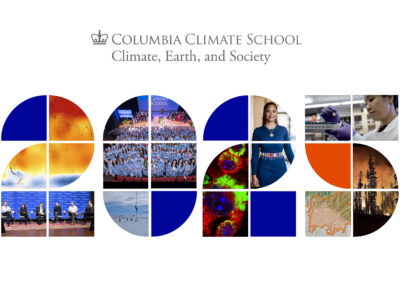Iceland is home to hundreds of glaciers, but in 2014 the number fell by one: the former Okjökull glacier was the first Icelandic glacier to melt due to human-caused climate change.

Source: Gísli Pálsson
On August 18, 2019, an event will be held to install a monument to the lost glacier. It was organized primarily by a group of researchers from Rice University in Houston. Participants will include geologists, authors, members of the Icelandic Hiking Society and the general public. In a press release from Rice University, anthropologist Cymene Howe, who produced Not Ok, a documentary about Okjökull, said, “by marking Ok’s passing, we hope to draw attention to what is being lost as Earth’s glaciers expire. These bodies of ice are the largest freshwater reserves on the planet and frozen within them are histories of the atmosphere. They are also often important cultural forms that are full of significance.”
During the event, which the organizers have termed an Un-glacier Tour, a metal plaque will be installed which reads, “Ok is the first Icelandic glacier to lose its status as a glacier. In the next 200 years all our glaciers are expected to follow the same path. This monument is to acknowledge that we know what is happening and what needs to be done. Only you know if we did it.” The words were written by Icelandic author Andri Snær Magnason, who will be present at the ceremony. Howe also said that it is the first monument to be installed for a glacier lost to climate change.

Source: Rice University
The plaque also lists the carbon dioxide concentration “415 ppm,” referring to the concentration recorded in May 2019 at Mauna Loa Observatory.
Okjökull is now considered dead ice. Director of the North Cascades Glacier Climate Project Mauri Pelto told GlacierHub that “stagnant ice that no longer moves is dead ice; a glacier by definition has movement.” In other words, glaciers continuously build up new ice and flow as a result of that process. When an ice mass loses those qualities it can no longer be called a glacier and is instead dead ice.
“Iceland is not the first country on our planet to lose a glacier due to increasing climatic changes, and it is not the last,” geographer M Jackson told GlacierHub. She continued, saying, “we are losing glaciers worldwide at unprecedented rates.” Other countries that have already lost glaciers include Bolivia, the United States and Venezuela, and many other places are on their way to losing their glaciers.
Despite the unfortunate prevalence of glacial retreat, the loss of a glacier in Iceland is particularly poignant because of the country’s relationship to its ice and glaciers. Icelandic anthropologist Gísli Pálsson told GlacierHub he thinks glaciers “have strong significance in Icelandic culture and history.” He elaborated, saying, “there is a slogan about Iceland, ‘it is the land of fire and ice;’ the name ‘Iceland’ of course highlights the ice connection, and, historically, there have been scholars on glaciers. Some glaciers have been travel routes and have been located between communities without any other connections so there were frequent travels across them for trading.”
Pálsson was a member of the first Un-Glacier tour in the summer of 2018. He described the day, saying, “it was a long ride into the highlands and once we got there the mountain was covered with fog and it was a bit spooky. We started to walk uphill and soon the sky cleared. Once we got up there it was stunning scenery of the nearby mountains and we walked around the crater almost in a complete circle and could soon see the remains of the sleet and ice in the bottom of the crater.” He said the tour was composed of about 20 people and they “talked about the climate, glaciers and the history of this particular one, and plans for an event a year later which is now coming up.”

Source: Gísli Pálsson
With regard to the Un-Glacier Tour II, Pálsson said, “I am unsure if I will be able to go this time, but I wish I could. I’m sure this first symbolic event of paying tribute to a gone glacier will be a well attended and significant event that will later on, with more glaciers under threat, be on record and flagged repeatedly.” M Jackson also had a positive response to the event and said, “I’m grateful this memorial has been created, and hope such a stunt will encourage more social and political action to meet climatic changes in the days, months, and years to come.”
The melting of Okjökull takes on one meaning for Icelanders and another in the broader context of climate change, but in both circumstances helps to increase awareness of the challenges that climate change will bring about as time goes on.
Elza Bouhassira is a graduate of the Sciences Po-Columbia University Dual BA Program. During her time at Sciences Po, she took a variety of social science courses while having a focus in law and at Columbia Elza majored in sustainable development. As an undergrad, she was a staff photographer at the Columbia Daily Spectator. Looking ahead, Elza is interested in pursuing a career in environmental law.
A version of this post was originally published on GlacierHub. GlacierHub is managed by Ben Orlove, an anthropologist at the Earth Institute and the Center for Research on Environmental Decisions at Columbia University.



